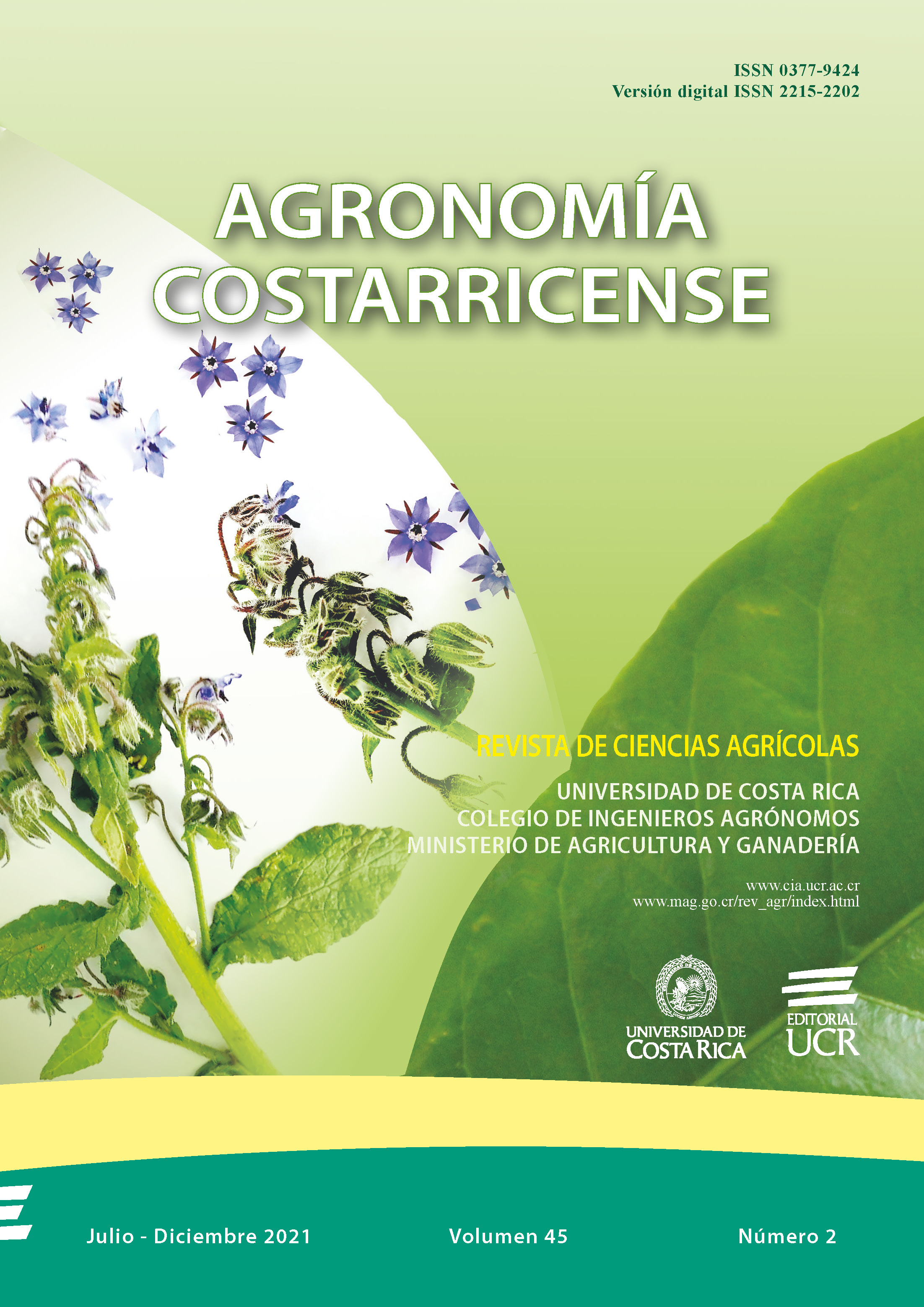Abstract
Introduction. The common bean (Phaseolus vulgaris L.) is a legume that is widely consumed in developing countries. In Costa Rica, its consumption is still high (10.54 kg.person-1. year1 ), and its production is mainly located in the southern and the northern regions of the country. The grains of this legume could be contaminated with Fusarium, a mycotoxigenic fungus that colonizes different crops. Objective. Identify Fusarium species that colonize the grains of Costa Rican black beans. Materials and methods. Forty-nine samples of black bean grains were collected during 2017, 2018 and 2019 in different regions where this grain is produced in Costa Rica. Those were used to isolate and identify the Fusarium species based on the partial sequences of TEF-1α (translation elongation factor 1-alpha) and RPB2 genes (RNA polymerase II subunit). Results. A total of 28 Fusarium isolates were obtained, of which 82% belong to the Fusarium incarnatum-equiseti species complex (FIESC). The presence of Fusarium species was high and varied according to the year of sample collection; thus 2018 was the year in which the lowest prevalence was found (43%) and 2019 the highest (76%). Seventy-one percent of the Fusarium species were isolated from samples collected in the Brunca region in southern Costa Rica. F. equisetti was isolated only from one sample obtained from the Huetar Atlántica region, while F. incarnatum, F. oxysporum and F. verticillioides were found distributed in samples collected in different regions of the country. Conclusion. The present study demonstrates the diversity of Fusarium species colonizing black bean grains in Costa Rica according to the geographical location and the year of collection of the samples. Most of the isolated species are well known producers of mycotoxins that cause adverse effects on human health.


